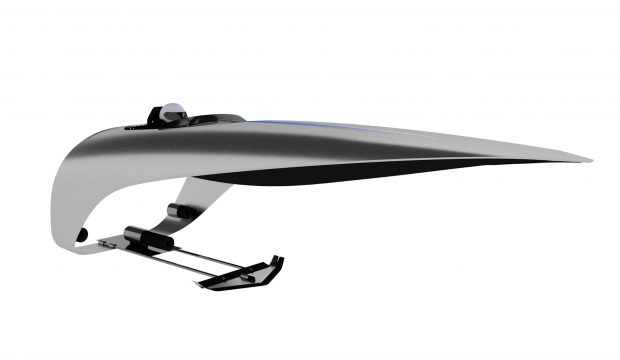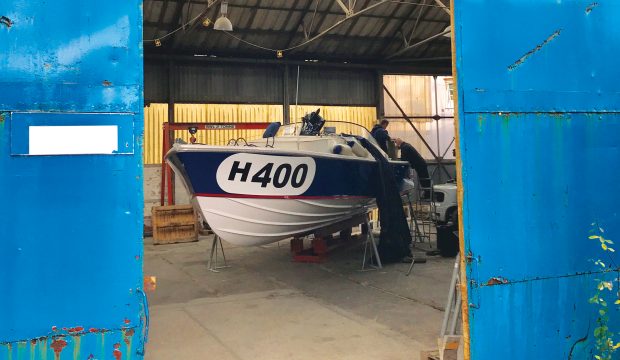Ray reveals his key part in the birth of offshore marathon powerboat racing
Many of the teams that have entered the Venture Cup London to Monte Carlo race in June probably take marathon racing for granted, but it hasn’t always been a major motorboating sport. In fact, the first event of its kind took place less than 50 years ago.
Several long-distance races on the sea were recorded in the early years of motorised boating but these were little more than single-leg A to B affairs rather than the current format where the entire course is broken down into separate sections and raced day after day.
In 1905 a 500-mile race took place in the Mediterranean between Algiers and Toulon but this had to be abandoned when a severe storm decimated the fleet. Little more happened until after the First World War.
Records show the Royal Motor Yacht Club organised a long-distance offshore event in the 1920s and 30s. It was known as the London to Cowes but catered for craft very different from those that will be setting off from Greenwich on June 7. Most were standard seagoing motor cruisers covering the course under rules very similar to those currently used for predicted log rallies.
It was in September 1968 that I was invited to lunch in London’s Wig and Pen club by Group Capt ‘Crab’ Searle. Gaining his nickname in WWII for being one of the first to land a Spitfire cross-wind (crabbing), he ran a marine PR agency during which time he also became yachting correspondent for the old London Evening News.
He had an idea, as well as the powerful backing of the Daily Telegraph and BP, and was asking me if it would be possible to run a powerboating race around the British coastline. By coincidence my old mate, the late Geoff Tobert, and I had been planning yet another long-distance seagoing expedition over a similar course using a 20ft open runabout but Crab’s idea was far more exciting.
I had told him I thought it was an ambitious suggestion long before I’d finished my dessert but possible, and that such an event would be a great race. And so marathon racing was born. Crab passed the organisation over to the Royal Southern YC that was to later sadly sideline its instigator.
It took place in the summer of 1969 and was a tremendous event which later set the pattern for all future marathons by creating a new set of international rules allowing competitors to gain finishing places despite missing sections due to mechanical breakdown or hull damage.
Of the 42 boats HRH the Duke of Edinburgh flagged away from Portsmouth in July that year over half were still racing when they returned ten days later, a great success by any standard.
Understandably, with the backing of the Daily Telegraph, the race received huge media exposure. The Ford Motor Company, which had its own team of three Ford Sabre-powered Fairey cruisers, produced the 30-minute film Ride the White Horses (below), which the BBC used to pilot the forthcoming colour transmission. It was transmitted after the station closed down every night for more than 12 months. Imagine its value to a sponsor in today’s economic climate!
In 1972 the late John Chitty and his wife Hillary staged an even more ambitious race from London to Monte Carlo. In comparison to Crab Searle and his serious sponsorship, the pair worked with a mere £30k (worth about £200k today) given by the Kent marina company, Richborough Port Developments.
Despite John Chitty being told by various powerboating pundits his race was an impossibility with competitors having little chance of reaching north-west France, let alone the Mediterranean, he went ahead regardless and in doing so went down in powerboating history. It was a tremendous success with a high percentage of entries reaching the principality in fine style headed by Jaffa Orange Juice but won on elapsed time by HTS (pictured).
Another 12 years passed before the next marathon took place, this time the Everest Double Glazing Round Britain organised by UKOBA and headed by Tim Powell. By now the cost of offshore racing had risen dramatically and while still very popular, hull size and horsepower had come down. Apart from two Italian entries in the Class I category the majority of contenders were smaller Class II outfits plus a couple from Class III, one entered by Gina Campbell.
Again, it became a great adventure dominated throughout by Italian teams with Fabio Buzzi winning by a large time margin. Second place was filled by fellow Italian Renato Della Valle whose boat was powered by a pair of Lamborghini racing engines making their offshore debut.
This time the fleet numbered less than half the 1969 line-up but nevertheless revived enthusiasm for this type of offshore challenge. In fact it certainly fired up the Italians who began following suit with events such as the Venice to Monte Carlo.
Twenty-four years passed before we had a fourth British marathon. In 2008 ex-offshore competitor Mike Lloyd organised the third Round Britain Race.
By now the sport had changed dramatically. The size of offshore fleets in all classes had come down considerablyand Britain’s leading offshore organiser, the United Kingdom Offshore Boating Association, had all but ceased to exist.
The annual Cowes-Torquay-Cowes, which had been considered Europe’s premier offshore event, saw fleets shrink from line-ups of more than 50 to just a handful. Perhaps more important, powerboat racing had lost the interest of the media and in doing so no longer attracted the same level of financial sponsorship so vital to any organiser.
Despite this, Lloyd’s event went ahead attracting a healthy number of competitors thanks to a last minute injection of funds by Fiat but the pattern of craft was no longer the same.
When the Daily Telegraph & BP Round Britain took place in 1969 the rigid inflatable hull (RIB) was virtually unknown. Apart from the little Psychedelic Surfer entered by John Caulcutt the remaining fleet were all traditional monohulls. However by 2008 monohulls accounted for only half the line-up and the forthcoming Venture Cup to Monte Carlo will almost certainly have a high percentage of RIBs.
The first Round Britain fleet was mostly powered by gasoline engines while the second in 1984 saw a marked increase in diesel units. The 2008 event was almost entirely diesel and the forthcoming Venture Cup is certain to see a complete reversal in form of power from the ’69 race.
In those days offshore multihulls hardly existed. It’s therefore no surprise the fleet was totally monohull. The same applied to the London to Monte Carlo in 1972 but in 1984 catamarans began making an appearance. They proved a disaster.
While offshore multihulls could indeed outpace the entire fleet as regards speed and performance they were no match when it came to rough offshore conditions. Only one reached the finish and the lessons learned here were taken on by Mike Lloyd in 2008.
He restricted his entry to monohulls and RIBs and this has since been wisely adopted for the Venture Cup where heavy swells in the Bay of Biscay and Golfe du Lion would almost certainly prove a bridge too far for cats.
There is little doubt that marathon offshore powerboat competition has done its bit when it comes to innovations in the design of domestic motor yachts. Hulls, power units, safety and reliability at sea have all benefited.
Long-distance offshore powerboat racing has therefore come a long way since my lunch at the Wig and Pen club all those years ago. Just as well I told the late Crab Searle his race was possible after all!
Subscribe to the print version of MBY
Subscribe to a digital version of MBY











